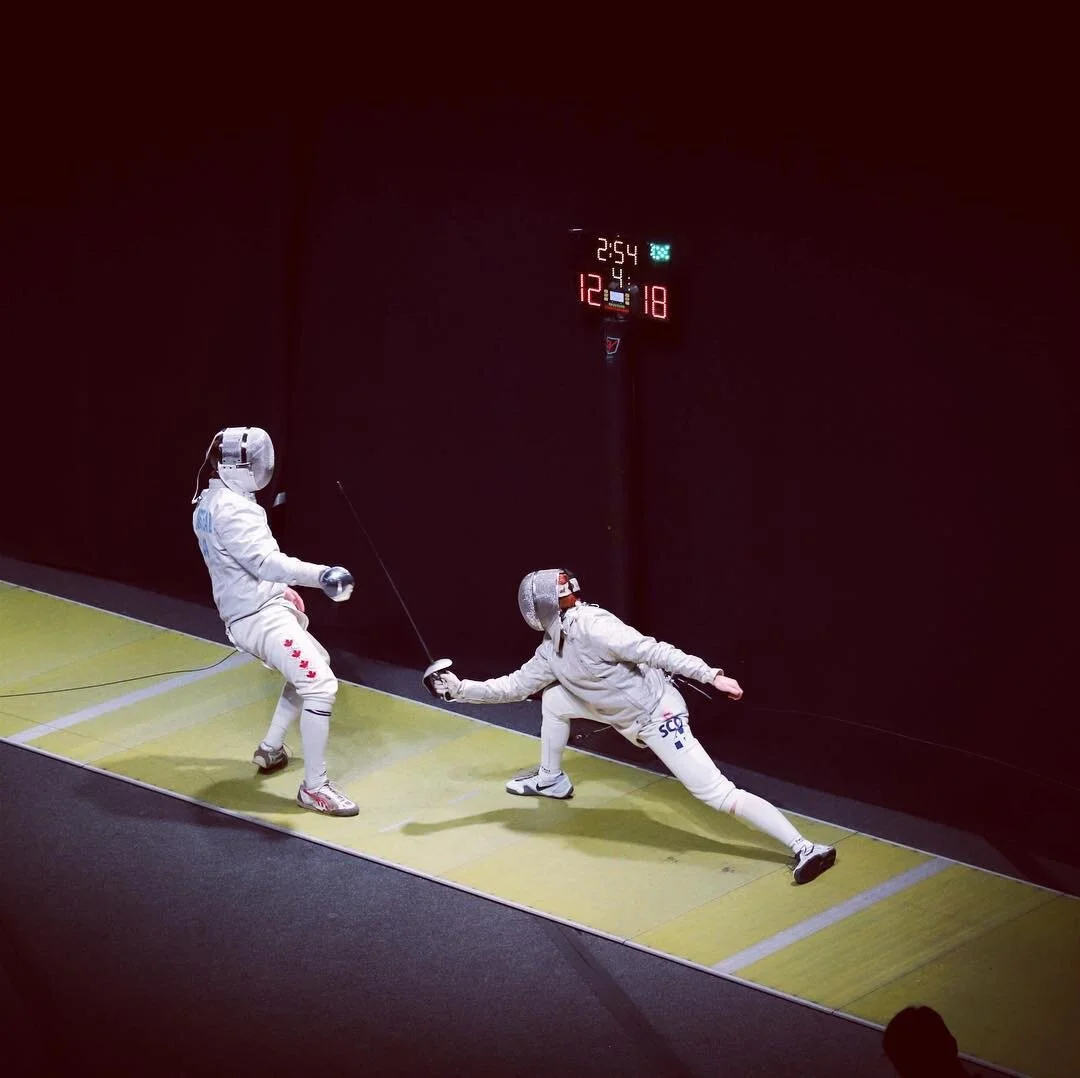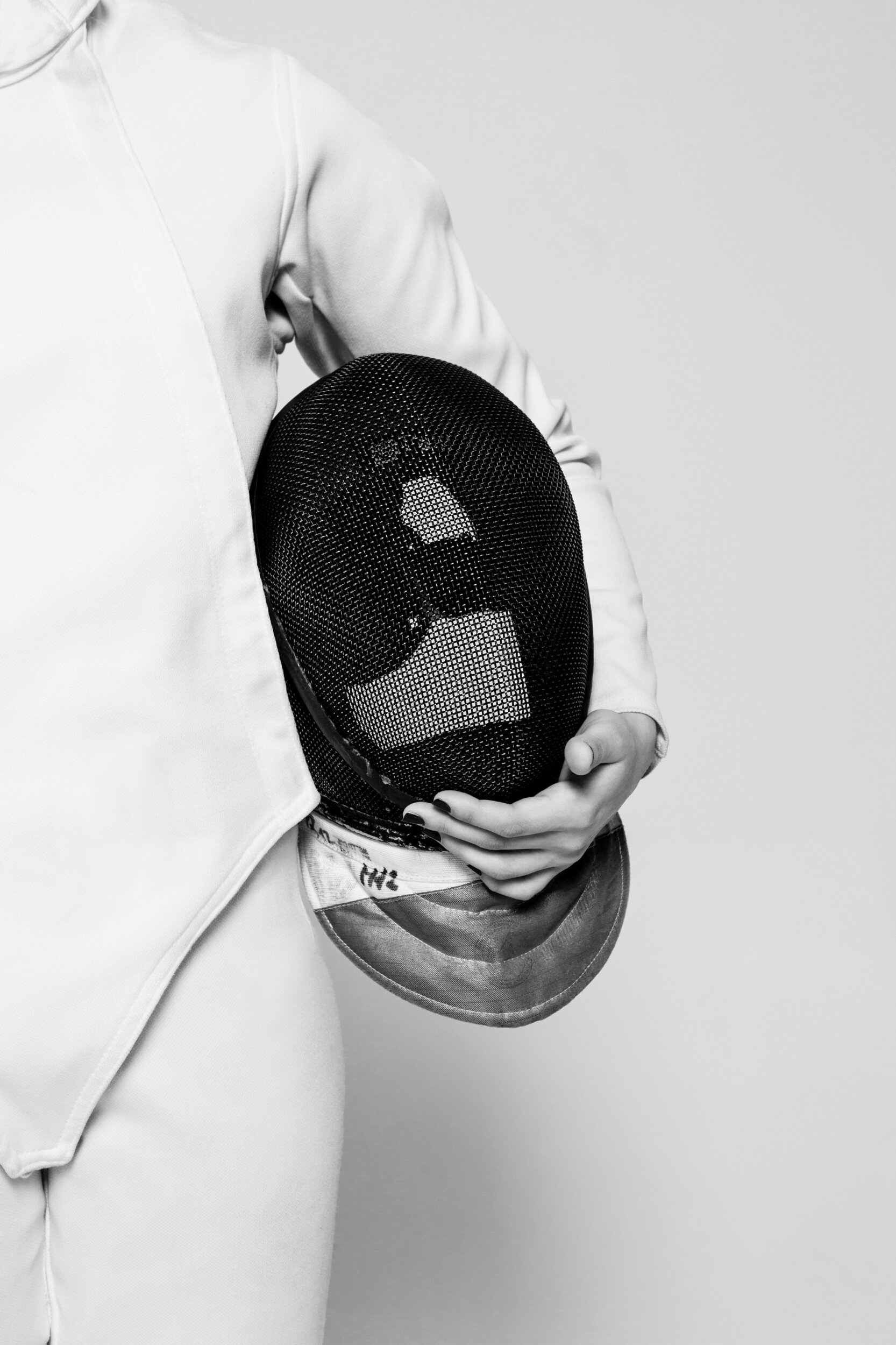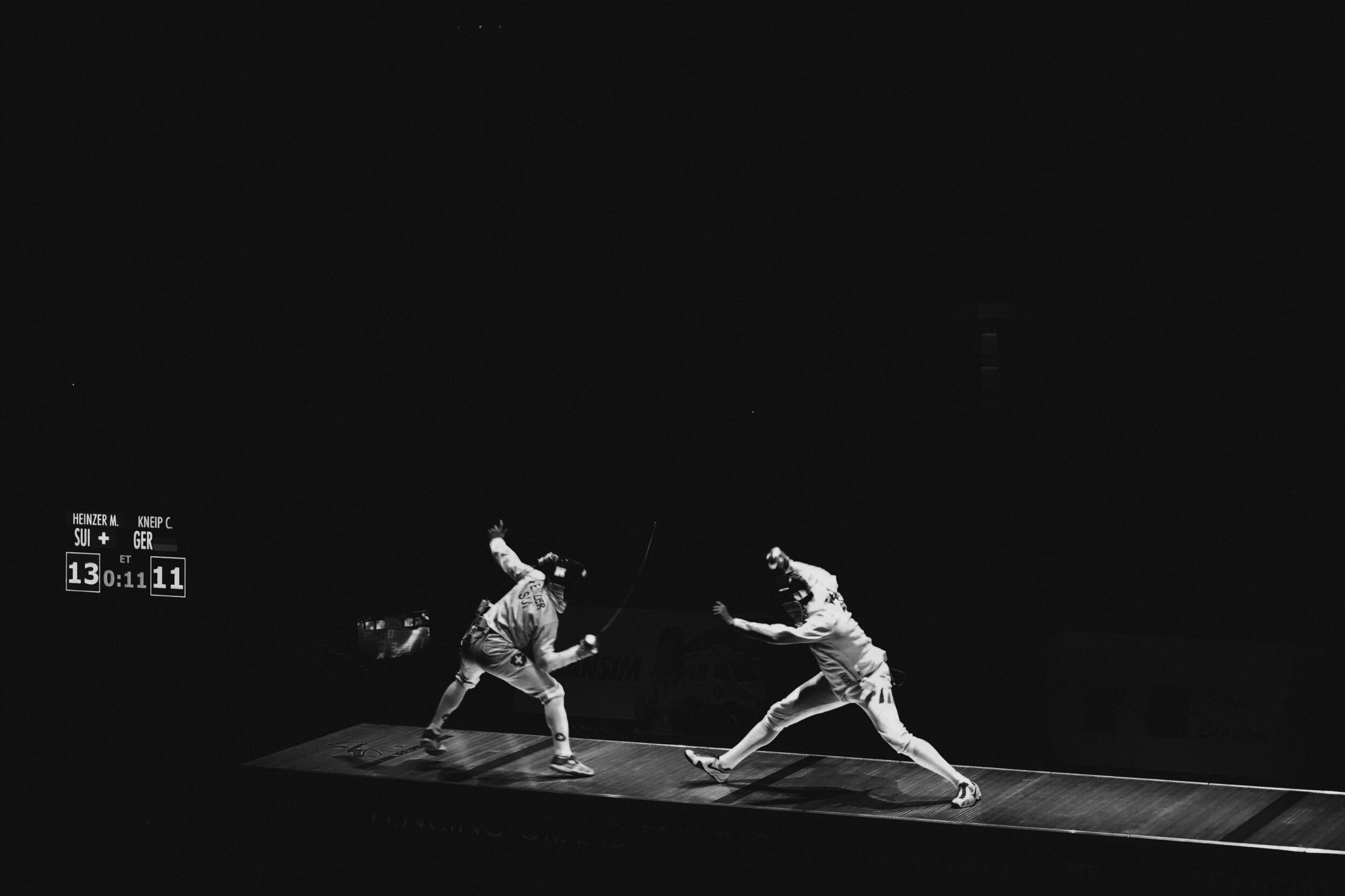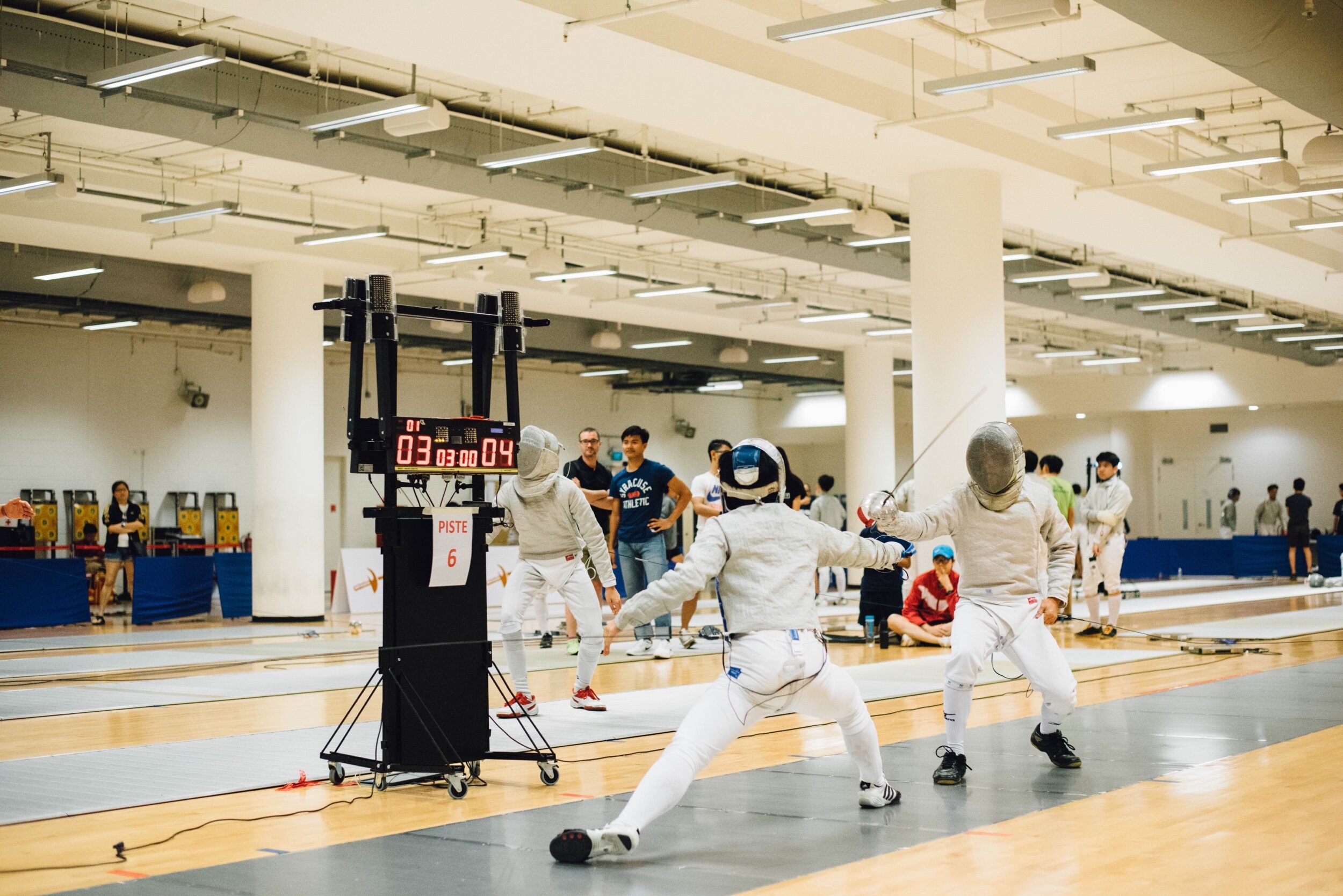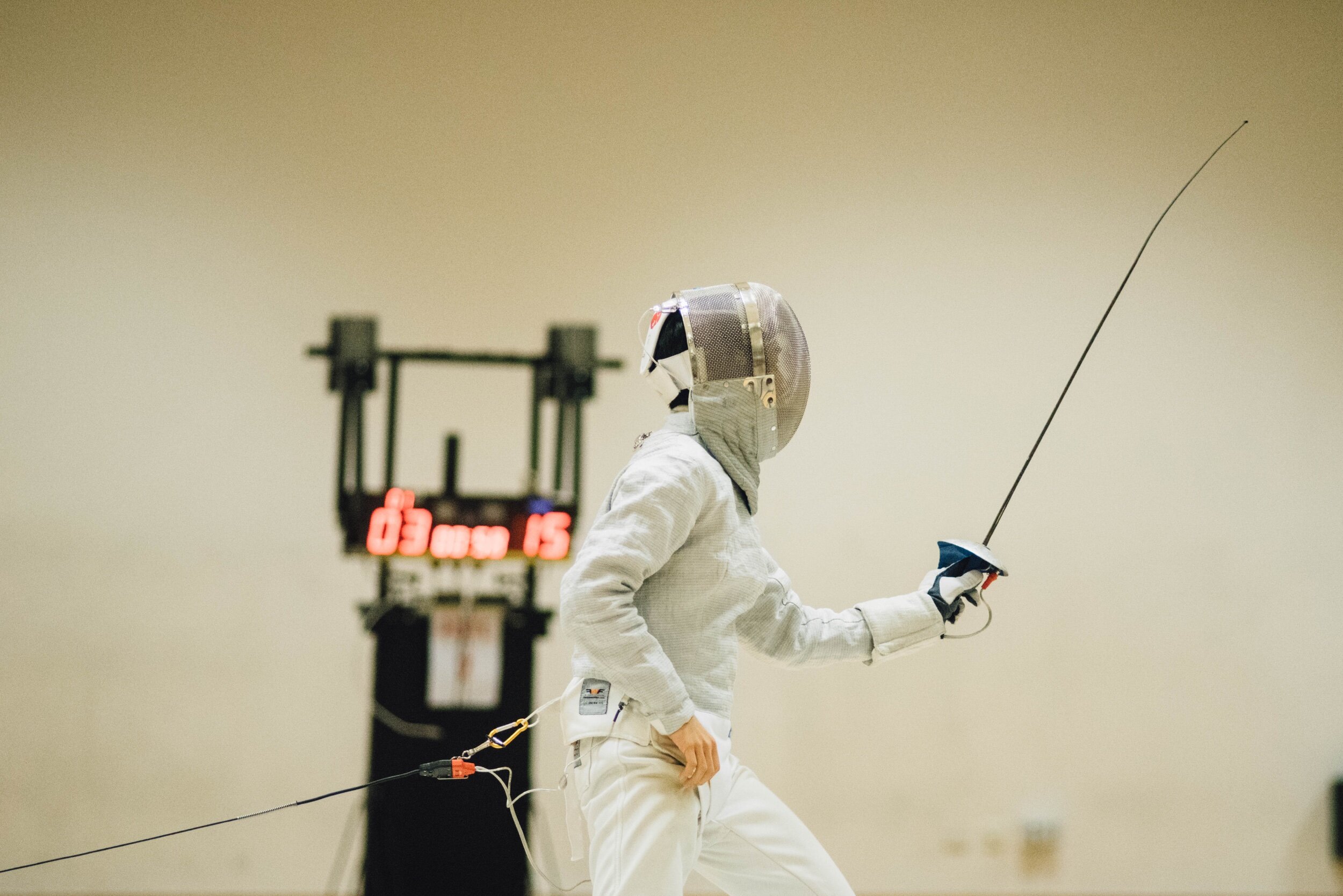An exciting mix of athletic sport and tactical combat, fencing is a great way to exercise both body and mind.
Why not try Fencing?
It's a naturally sociable activity (it's tricky to fence on your own!) which attracts people from all walks of life (contrary to the image sometimes seen in films). It's accessible to everyone, young and old, male and female, able-bodied and disabled alike. And, in case you're wondering, it's also a very safe sport. So all in all, it's a great way to meet new people and get a good work-out at the same time.
And don't worry if you're not into sports. Many people who don't normally consider themselves 'sporty' find they really enjoy the unique mix of skills used in fencing.
With a network of clubs in Scotland it is easy and inexpensive to try fencing (equipment is provided). And should you enjoy it, there are many opportunities to pursue the sport further both recreationally and competitively.
For competitive types, it offers opportunities for both team and individual competition; and for the really dedicated, representative opportunities at regional, Scottish, UK and Olympic levels (fencing was one of the original sports in the modern Olympic Games).
It's also ideal for youngsters, being safe, physically challenging, and great fun. As a combat sport, fencing offers a great way for children to get rid of all their energy and emotion constructively; and of course all children enjoy a sport where they are actually allowed to hit each other! Fencing will also help develop many other attributes including speed, coordination, balance, timing, concentration, team-work and tactical thinking, amongst many others.
Finally, being an indoor sport, fencing is of course ideally suited to our great Scottish climate!
So, if you're looking for a physical activity that's a little bit different, fencing might just be ideal.
What’s Fencing like?
Fencing is a combat sport based on the ancient art of sword-fighting. The aim is to hit your opponent whilst blocking or evading their attempts to hit you. In competition, a typical fencing fight finishes when one opponent reaches 15 hits.
There are three variants of fencing each using a different type of sword - the foil, the epée, or the sabre (don't worry, although based on real sword-types they are not actually sharp!) The three weapons differ in how, where and when you may hit your opponent, resulting in different styles of combat. Most people start with the foil but some move on to the very attack-oriented sabre, or the more tactical epée. It doesn't really matter too much which weapon you try first - it's easy to switch later on.
Fencing takes place on a long strip called the 'piste' (14 metres long, just a little longer than a badminton court). Fencers move along the piste as they seek an opportunity to hit their opponent, and as they try to avoid their opponent's efforts to hit them. The ability to move on the piste, and especially to change direction or accelerate at the right moment, is an important skill in fencing.
Fencers learn various sword movements designed to block (or 'parry') an opponent's attack, and a complementary set of attacking movements designed to evade an opponent's parries. Learning fencing involves practicing these moves in controlled conditions to master the coordination, and then learning to use them, combined with well-timed movement along the piste, to outwit or outpace your opponent. Of course, your opponent is trying to do exactly the same thing!
The result of all this is a sport rich in tactical variation. Everyone can develop their own style of combat suited to their particular attributes (height, strength, speed, aggression, etc). Part of the fun of fencing is in seeing how your style matches up to an opponent, and adjusting it in response if you can!
How do I start?
Where can I start? There's a network of friendly fencing clubs up and down the country, and at many schools and universities. Have a look at our club list to find your nearest club and contact them, or just turn up! Or email Scottish Fencing if you don't see a local club listed.
What do I need? Not much! Clubs provide safe fencing equipment for new starts - you just need to bring indoor trainers and some loose clothing (eg, tracksuit bottoms and a t-shirt).
How will I learn? Your club will teach you, either through a class lesson where you practice with other beginners or through individual coaching, depending on the size of the club.
How much does it cost? Most clubs allow beginners to try fencing for a nominal fee, and equipment is provided.
What if I like it? If you enjoy fencing and want to continue we recommend you join Scottish Fencing. Your club will advise you about how to improve and get involved in competitions if you want. And you can browse this website to find out about the various fencing events taking place around the country.
I'm a teacher... How can my pupils try fencing? If you want to introduce fencing to your school or local community Scottish Fencing can help you. It's quite possible to start a club even with little or no fencing experience using plastic swords. Fencers can then go on to metal fencing by joining a local club and Scottish Fencing can help them to find a local club they can join. Please email Daniel Baker Scottish Fencing’s Club and Community Development Manager.

